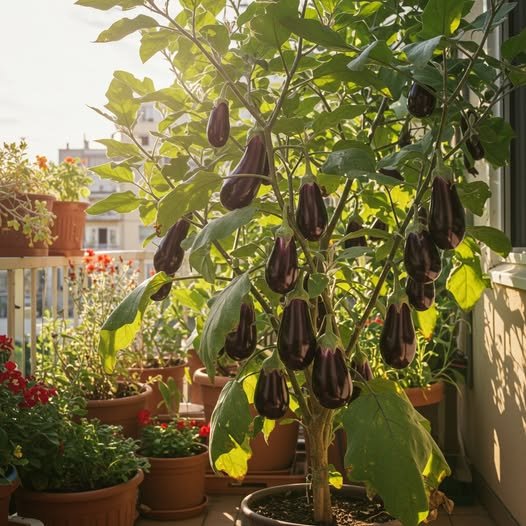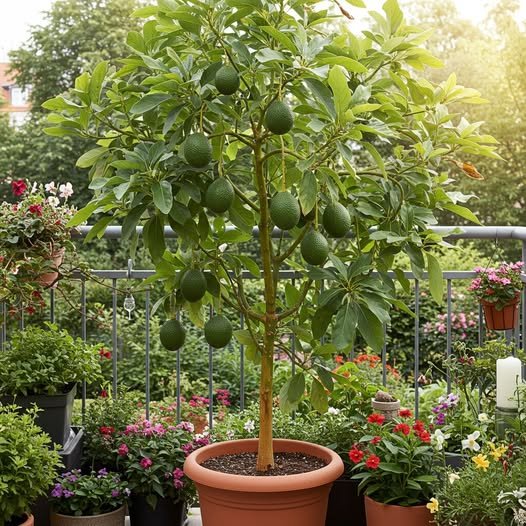Eggplants are a popular vegetable to grow in home gardens, but they can often require regular watering, especially during the hotter months. However, I discovered a method that allowed me to grow eggplants without needing to water them for an entire month, and surprisingly, the yield was still high. This technique not only saved me time and effort but also proved to be a highly effective way to cultivate this vegetable with minimal resources. Here’s how I managed to achieve such great results.
Why the Traditional Approach to Watering May Not Be Necessary
Typically, eggplants require regular watering, especially when they are in the early stages of growth. However, over-watering can be detrimental, leading to root rot or stunted growth. This is where my method diverged from the conventional approach. By utilizing a unique soil preparation and planting technique, I was able to reduce the need for frequent watering without affecting the health of the plants or the final harvest.
The Key to Success: Preparing the Soil Correctly
The foundation of this method is to ensure that the soil is prepared in a way that retains moisture and provides a consistent supply of nutrients for the plants. The key lies in incorporating organic materials into the soil, which helps it retain water for longer periods. Here’s how I prepared the soil for planting my eggplants:
1. Choose the Right Soil
Start with well-draining, loamy soil that is rich in organic matter. The soil should have good structure to allow air to reach the roots while also being capable of holding moisture. I mixed in compost to enrich the soil and improve its ability to retain moisture.
2. Add Mulch
A thick layer of mulch is crucial for moisture retention. I used organic mulch, such as straw or wood chips, which acts as a barrier that helps prevent the evaporation of water from the soil surface. It also keeps the roots cool, preventing them from drying out in the summer heat. Applying a thick mulch layer—around 3 to 4 inches—ensures that the soil stays moist for a longer period of time, reducing the need for frequent watering.
3. Use Water-Retaining Gel or Crystals
Water-retaining gels or crystals are another effective addition to the soil. These absorb and hold large amounts of water, releasing it slowly to the roots as needed. I added these gels directly to the planting holes before placing my eggplant seedlings in the ground. This ensured that the plants had access to water even during periods of drought or when I wasn’t able to water them.
4. Planting Deeply
When planting eggplant, I made sure to plant them a little deeper than usual. This encourages the roots to grow further down into the soil, where moisture is more likely to be present. By burying the seedlings deeper, the roots also gain more stability, making the plants less susceptible to wind damage or drought.
The Watering Strategy: Minimal, but Effective
Once the eggplants were planted, I implemented a minimal watering strategy. I made sure to water deeply just once before the first month began, and after that, I relied on the moisture-retaining techniques mentioned above. Here’s what I did during that month:
1. Initial Deep Watering
Before the mulch was applied and the water-retaining gels took effect, I gave the plants a good deep watering. This initial watering was important to establish a strong root system right from the start.
2. Let the Mulch Work Its Magic
The mulch played a significant role in maintaining soil moisture. As it broke down over time, it helped to slowly release nutrients into the soil while also reducing water loss through evaporation. I didn’t water again for several weeks, as the mulch and the water-retaining gels kept the soil moist enough for the eggplants to continue growing.
3. Observation and Adjustment
During the month, I closely monitored the plants to ensure they weren’t showing signs of stress, such as wilting or yellowing leaves. Surprisingly, the eggplants didn’t seem to mind the lack of water. The soil retained enough moisture for them to continue developing without the need for frequent watering.
Fertilization and Maintenance
Even though watering was minimal, I still provided the eggplants with essential nutrients to ensure they grew strong and healthy. I used a balanced organic fertilizer that was rich in potassium and phosphorus, which are important for flowering and fruiting in eggplants. I applied the fertilizer once every few weeks, following the package instructions.
In addition to fertilizing, I also made sure to prune the plants as they grew. Regularly removing dead or damaged leaves helped the plants focus their energy on producing fruit. I also provided some support for the eggplants, using stakes to keep the plants upright as they grew taller.
The Result: High Yield Despite Minimal Watering
After a month of minimal watering, the eggplants thrived. The plants were healthy, and the yield was far greater than I had expected. The eggplants grew larger than usual, with thick, glossy skins and no signs of stress or disease. The overall health of the plants was impressive, and I was able to harvest a bountiful crop without needing to spend too much time watering.
Conclusion: Less Can Be More
This method of growing eggplants without frequent watering proves that sometimes less is more. By preparing the soil correctly, using organic mulch, and incorporating water-retaining gels, I was able to provide the plants with all the moisture they needed for an entire month. The results were a high-yield harvest with minimal effort, making it an ideal solution for anyone looking to grow eggplants or other vegetables in a more sustainable and low-maintenance way.
If you’re tired of constantly watering your plants or struggling with inconsistent rainfall, this method may be the perfect solution for you. By focusing on proper soil preparation and moisture retention, you can grow healthy, productive plants with less effort and water usage. Give it a try, and you might be amazed at the results!



